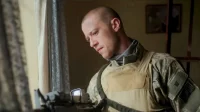Insights from Director Alex Garland on the Ending of *Warfare*
In a recent interview with Collider, Alex Garland, the director of *Warfare*, shared intriguing insights about the film’s conclusion. Set amidst the tumultuous backdrop of Ramadi, Iraq, in 2006, the movie draws upon a true story, centering around a house that functions as a pivotal base for Navy SEAL Team Alpha One.
The House as a Character
Garland elaborated on a crucial choice in the film’s ending, highlighting how the house evolves into a character of its own. As the narrative progresses, the house transforms from a mere setting into a vital component of the story’s emotional landscape.
Well, in some ways, the reason it ended up ultimately as the ending of the film is that there’s a strange way in which the house becomes a character. Once you’ve left the house, once you’ve left the street, in a sense, that street shot is like a wide shot of that character in some strange way. Once you’ve left it, the film just feels over. The story, this window of time that we were trying to recreate as accurately and honestly as possible, that window’s closing. So, it’s like it’s done.
On top of that, film and truth and representations of reality, or then romanticizing or overdramatizing in films, it’s such a complicated, long history with these things. Having spent a long time in the recreation, it felt important to add to that a sequence of images that, in a way, don’t just show the actors alongside their real-life counterparts, but also show the recreation of this. We don’t try to pretend that something was happening that wasn’t happening. You didn’t watch the event. You saw a recreation of the event, but the recreation you saw was informed directly by people who were there. It felt necessary to add that to the viewer’s understanding of the film. So, in some sense, for me, the film doesn’t actually end with the wide shot of the street; it actually ends with the last of those photographs. They’re not a credit sequence; they are actually part of the film itself.
A Complex Tapestry of Truth and Fiction
Garland reflected on the intricate relationship between filmmaking and the representation of reality. He emphasized the need for authenticity in recreating historical events, ensuring that the film remains true to the experiences of those involved. This blend of fact and dramatization invites viewers to engage deeply with the narrative, fostering a better understanding of the events depicted.
Source: Collider


